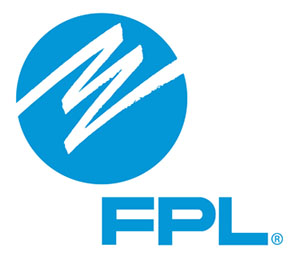The Loxahatchee Groves Town Council received an update on the installation of underground powerlines from representatives of Florida Power & Light on Feb. 15, but the discussion raised the long-existing specter of power poles installed too close to the roads due to narrow easements in some places.
Ray Lozano, manager of the FPL storm security program, said the underground lines are part of a storm resiliency plan approved by the state legislature in 2019 to control the power grid during extreme weather.
“As part of this storm protection plan, we commit through the Public Service Commission every year to do a certain number of laterals [underground power lines],” Lozano said. “This year, we are prepared to schedule 602 laterals underground. These are neighborhood power lines, not the main feeder lines.”
He said the schedule allows more than 300 miles of overhead cable to be removed and placed underground. About 80 miles and 142 laterals are planned for Palm Beach County.
“About 80 percent of our mileage in laterals in Palm Beach County are in Loxahatchee,” he said. “The majority of our work in Palm Beach County is going to be in Loxahatchee.”
He said the work will speed up restoration efforts after a storm.
“Transformers will no longer be in people’s back yards,” he said. “Padlocked transformers will be in the easement or right of way where you can access it and restore power much faster if there was an outage.”
Lozano said power line replacement is established by the Public Safety Commission, based on past power outages from major storms, as well as outages attributed to vegetation overgrowth and day-to-day operations.
“Loxahatchee is at the top of our list in Palm Beach County,” he said, adding that FPL has begun initial construction of the project.
Leslie Cleaver, FPL project manager for Palm Beach County, said Loxahatchee Groves represents 64.4 miles of the overall project in Palm Beach County.
“That’s a lot of miles that we’re moving from overhead to underground,” Cleaver said. “That represents about 1,200 customers. We have broken your area into 16 different projects, 14 of which we are going to do this year.”
Some of the projects still require town permits. FPL External Affairs Manager Stephanie Mitrione explained that company representatives had met with town staff recently to discuss the project, and the topic came up of moving back some of the feeder lines that are close to roadways, particularly on C Road and other roads.
“We are on the outside edge of the right of way currently, so there are issues that need to be addressed for us to ever move those poles, but those are projects that we are happy to continue conversations on if that’s something you would like to explore, but we’d like to keep it separate from this underground project,” Mitrione said.
Councilwoman Phillis Maniglia said she was concerned that the transformers to be installed on the ground might interfere with passage on horse trails, and Cleaver said all the transformers would be installed on private property.
Town Manager Jamie Titcomb said that FPL had gained permission from private property owners to get the 10-foot-by-10-foot easements to install transformers.
Councilwoman Marianne Miles was concerned that the project dwelled on lines going to homes but not with major power lines running north and south.
Mitrione said the feeder lines had been hardened to be wind resistant in 2019.
“Those feeder lines going north-south should be in much better condition than they were before,” she said.
Cleaver said that in 2019, the feeder line poles were installed as part of the company’s overhead hardening program.
“That overhead hardening program is much the same as the underground lateral hardening program,” he said. “It is designed to make that feeder line resilient to be able to withstand hurricane-force winds.”
Several council members raised concern about the presence of old power poles that remained standing in town easements that still contained telephone lines that had not yet been moved. Many of the old poles are close to the road, presenting a hazard to traffic. FPL officials said they are in regular contact with the phone companies, but FPL has no authority to move those lines themselves.
Some council members also raised concerns about new poles that had been placed near the road, and FPL officials said some of the easements were not wide enough to locate the pole farther from the road unless they obtained more easement.
Mitrione said FPL has obtained the easements for the individual transformers, but the poles are placed at the edge of the easement as far from the road as possible.
“We have nowhere to go with these feeder lines,” she said. “We are at the very edge of the right of way. We have no right, as it stands today, to move this line any farther back. We’re not talking about little 10-by-10 squares. We need a continuous easement for that whole lane.”
Mitrione added that moving one pole is not sufficient because the line would not be straight, and FPL has no right to move the line any farther back.
“If you want to move these poles, then we need an extended right of way or easement,” she said, adding that she felt the underground lines had nothing to do with moving the power poles. “These poles are existing. The only way we’re touching them is to install a riser on some poles.”
After additional discussion, Danowski made a motion provided by the town’s legal counsel stating that the town supports FPL’s current underground project, provided that the utility poles be relocated out of the right of way within a reasonable time and directing staff and the town attorney time to prepare a resolution for consideration at the next council meeting to provide FPL written notice, in accordance with Florida Statutes, regarding such relocation. The motion passed unanimously.








